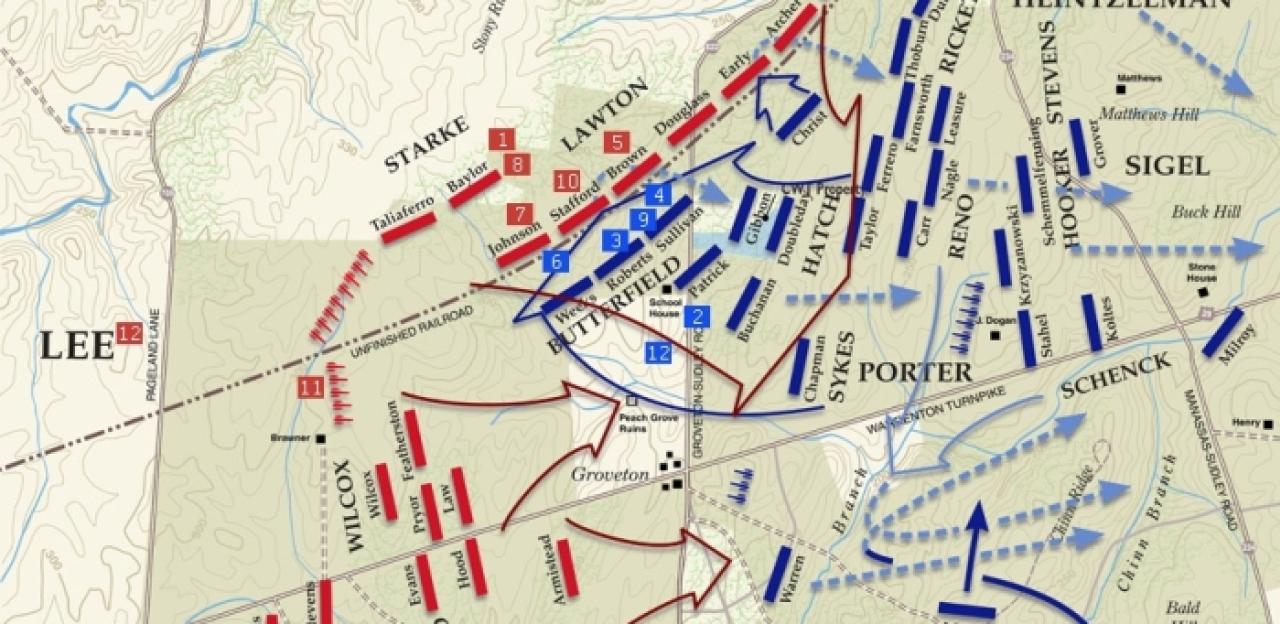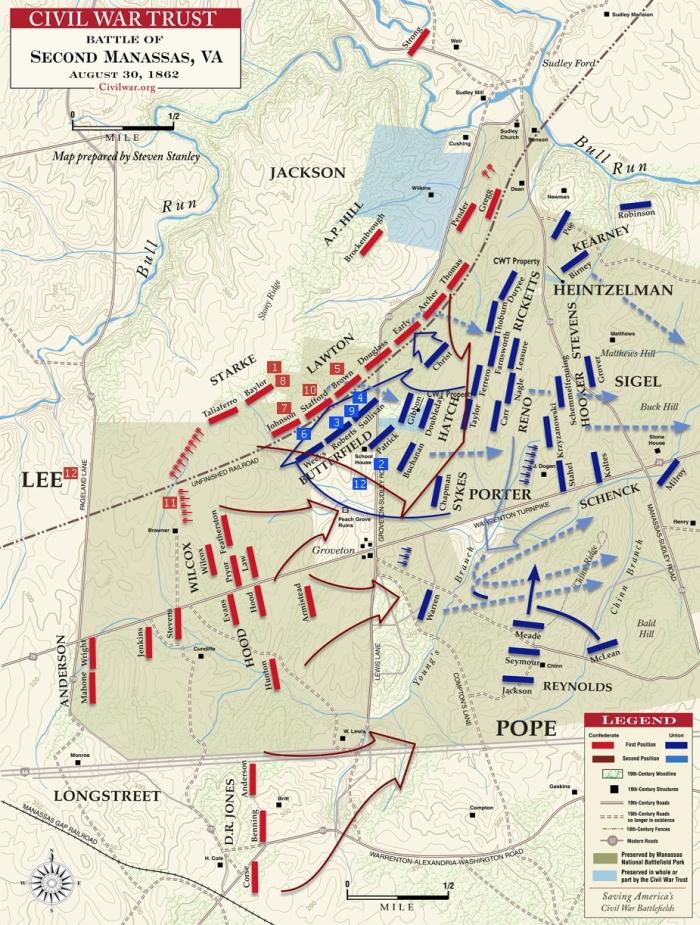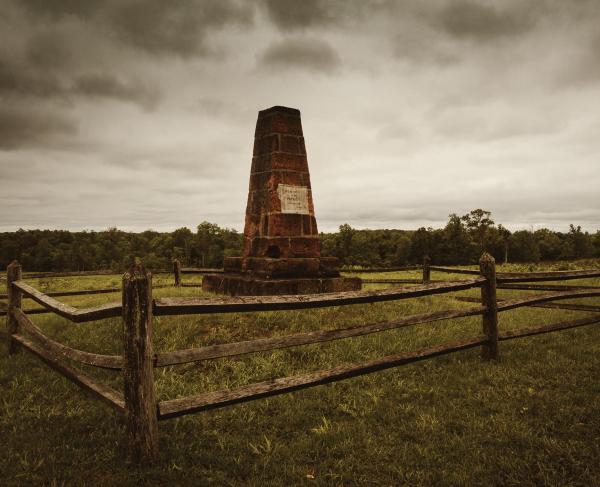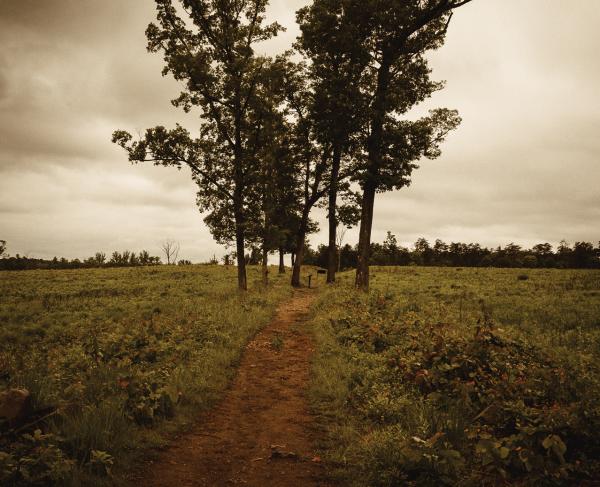Moments in Time: The Battle of Second Manassas - The Railroad Cut, Part 3


The afternoon of August 30, 1862
General Pope spent the morning of August 30th, in the words of one of his aides, “standing under a tree waiting for Jackson to retreat.” Despite repeated warnings from his subordinates, he still refused to believe that Longstreet was forming to attack his left flank. Jackson spent the morning resupplying his men, holding his position along the unfinished railroad. Finally, at three PM, Pope ordered Fitz John Porter to strike Jackson’s right flank. At Porter’s direction, over ten thousand men began to pick their way through the corpse-strewn brambles of the Groveton Woods. This would the largest single Union assault of the battle.
1. “We were transformed from a lot of good-natured boys to the most bloodthirsty of demoniacs.” – Theron Haight, 24th New York (USA)
Theron Haight was in the first wave of Porter’s assault. When he broke through into the clearing in front of the railroad cut he saw stabs of flame and heavy smoke erupt from thousands of points where muskets were leveled over the embankment. Shouting wildly, the Union soldiers surged forward, men screaming and falling for every yard gained. In the words of David Hamer, also of the 24th New York, “nothing but annihilation could keep us from breaking the bank.”
2. “With a mad yell the gallant fellows rushed up the hill to what was almost certain death.” – Major William Grower, 17th New York (USA)
Farther to the left, the 17th New York burst out of the woods well ahead of the rest of its brigade. Absorbing heavy volleys from the front and with canister raking their flank, sweeping away dozens of men with each blast, Grower ordered his men to take cover and open fire. He swung around desperately, looking for the rest of the brigade. Within fifty yards of the railroad cut, the men of the 17th could do nothing but hang on.
3. “We lay as flat to the slope as we could, crawling occasionally to the top and discharging our muskets, held horizontally over our heads, in the direction which seemed to afford a chance of hitting somebody on the other side of the grade.”— Theron Haight, 24th New York (USA)
Theron Haight finally slammed into the railroad excavation surrounded by those comrades who had survived their headlong sprint over open ground. The fighting reached a fever pitch here, with both sides pouring musketry into each other from opposite sides of the high earthen embankment, mere feet away.
4. “They were simply jammed up against the embankment….they were so thick it was impossible to miss them….what a slaughter of men that was!” – Henry Thomas, 15th Alabama (CSA)
From the other side of the railroad cut, Henry Thomas could not help admiring the bravery of the Union soldiers. Both sides held firm at the embankment, taking tremendous losses.
5. “I saw a Federal flag hold its position for half an hour within ten yards of one of the regiments in the cut and go down six or eight times.” – Brigadier General Bradley Johnson (CSA)
Before the battle of 2nd Manassas many in the Confederate army were contemptuous of their northern counterparts. In this, the largest battle of the eastern theater thus far, they were proved wrong. Running low on ammunition, the grey line began to waver.
6. “Tell the Stonewall Brigade to maintain her reputation.” – Stonewall Jackson (CSA)
Colonel Andrew Jackson Grigsby had taken command of the Stonewall Brigade in the smoky confusion of the railroad cut after Colonel Will Baylor was filled with bullets while hoisting the flag of the 33rd Virginia. He sent an aide to Jackson pleading for reinforcements. They would be there in ten minutes, Jackson responded, but in the meantime the brigade would have to hold its position.
7. “I saw our line making a grand rush, many of the men holding their arms before their faces, as though to keep off a storm.” – Theron Haight, 24th New York (USA)
Fresh Union soldiers were also entering the fray. Theron Haight remembered seeing them pour out of the Groveton Woods into the hail of bullets and push towards the railroad cut. Seconds later, he saw a sudden explosion of artillery fire rip through the frayed men. Longstreet’s cannons were in place on the Union flank. The second wave crumpled under his massed batteries, leaving Haight and his companions again without support.
8. “Boys, give them rocks!” – Michael O’Keefe, Stafford’s Brigade (CSA)
Dwindling Confederate ammunition supplies had reached a crisis point. Men all over the line were holding on with empty muskets. In a matter of minutes the Federals would realize the predicament on the other side of the railroad cut and charge into the tattered ranks of their defenseless opponents. At this moment Michael O’Keefe shouted an unorthodox suggestion to his comrades. Without any other alternative, the Confederates took up nearby rocks around the excavation and began to hurl them over the other side. Union soldiers were knocked senseless by the heavy stones—some began to throw them back. After around ten minutes of this desperate phase of battle, Confederate reinforcements arrived with fresh ammunition.
9. “Less hallooing and more firing!” – Stephen D. Lee (CSA)
The Union attack began to break up. With more Confederates joining the firing line at the railroad cut, Longstreet’s artillery taking aim, and no reinforcements in sight, Union officers began to pass the word to retreat. Stephen D. Lee, stalking through one of Longstreet’s batteries, struggled to keep his gunners focused as they saw thousands of blue-coated soldiers begin to peel away from the embankment and run pell-mell towards the Groveton Woods.
10. “The ground looked like a mill pond in a shower.” – officer of the 18th Massachusetts (USA)
Solid shot, shell, and shrapnel burst through the masses of Union soldiers as they ran towards safety. After almost an hour of death, they had had enough. The final attempt had failed violently, leaving the left flank of General Pope’s army in pieces.
11. “General Longstreet is advancing, look out for and protect his left flank.” -- Robert E. Lee (CSA)
Now, after days of forced marches, sharp skirmishes, and careful positioning, Longstreet was ready to launch his attack. 28,000 men stepped off at four PM, aimed squarely at Pope’s left flank.
Moments in Time at Second Manassas: Introduction | Part I | Part II | Part III | Part V
Related Battles
14,462
7,387



